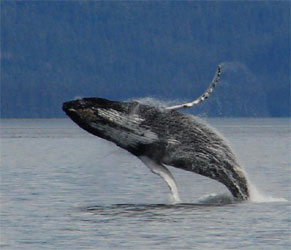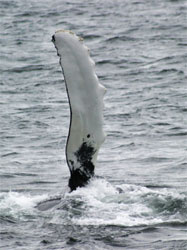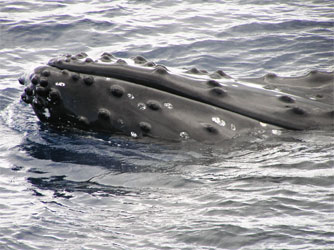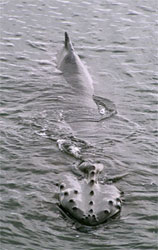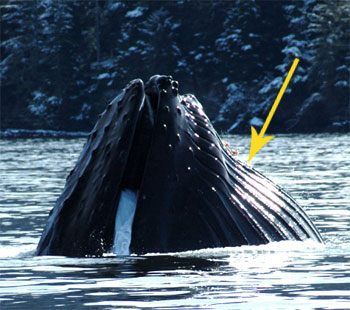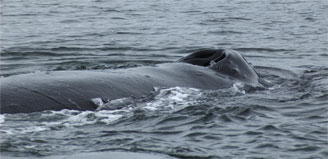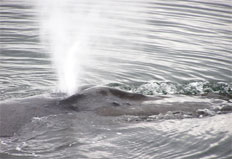Physical Description of Humpback Whales
Humpback whales are the most commonly sighted baleen whales in the Juneau area. When trying to distinguish humpbacks from other whales, there are a few unique features that can be used. Humpbacks have longer pectoral flippers (side flippers) than any other marine mammal. These flippers are striking in comparison to other whales, measuring roughly 1/3 of their body length.
They also have distinct protuberances on their head and chin. These protrusions, called tubercles, contain a single hair. The purpose of these hairs is unknown, though it is speculated that they are sensory hairs that perform much like whiskers.
Another noteworthy feature of a humpback whale is the 14-22 grooves that run the length of their undersides, from their chin to their navel. These grooves are called ventral pleats, and they allow the throat cavity to expand many times its normal size. This is an important feature in the filter feeding strategy of this baleen whale.
Humpback whales, along with all other baleen whales, have a paired blowhole atop their heads. In contrast, all toothed whales (such as killer whales) have single blowhole.
Humpbacks have an enormous lung capacity which makes it possible for these animals to dive for long periods, often in excess of 20 minutes. These extended dives allow the animals to descend to deep water for foraging (up to 500 feet). When a whale breaks the surface of the water for a breath, it only has a few moments to exchange the air in its lungs, so it must exhale with tremendous force. The force of this exhale vaporizes the seawater that surrounds the blowhole and creates a ‘blow’ at the surface of the water. This vertical pillar of water vapor is usually the first indication that a whale is in the area.
Humpbacks have an enormous lung capacity which makes it possible for these animals to dive for long periods, often in excess of 20 minutes. These extended dives allow the animals to descend to deep water for foraging (up to 500 feet). When a whale breaks the surface of the water for a breath, it only has a few moments to exchange the air in its lungs, so it must exhale with tremendous force. The force of this exhale vaporizes the seawater that surrounds the blowhole and creates a ‘blow’ at the surface of the water. This vertical pillar of water vapor is usually the first indication that a whale is in the area.
